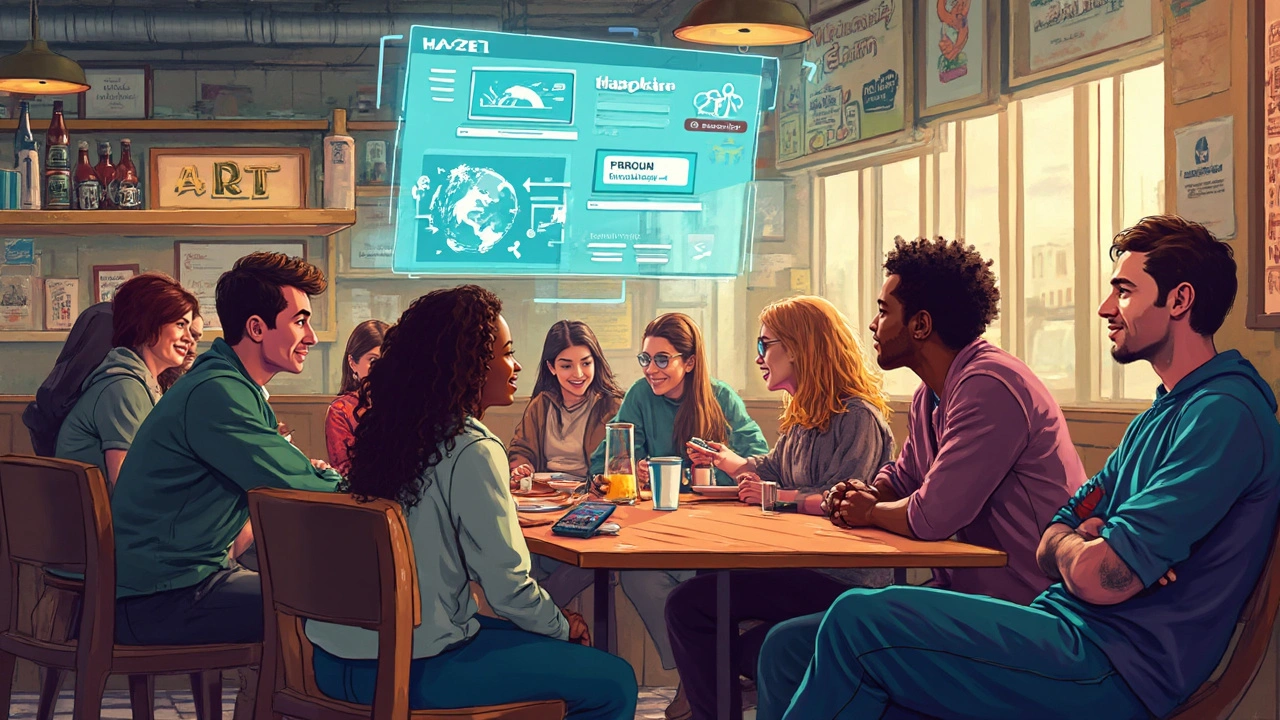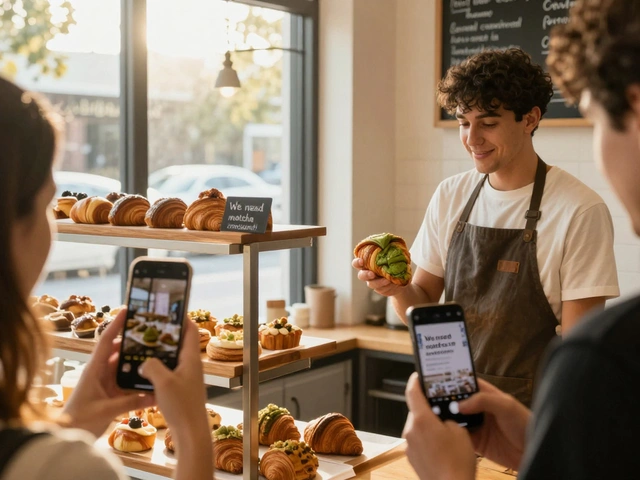Picture this: you’re juggling five social channels, your coffee’s gone cold, and there’s still no clue what to post for that product launch tomorrow. Social Media Managers know the grind—creativity meets deadlines meets analytics. But now, enter ChatGPT, the giant AI brain that sucks in billions of lines of text and spits out snappy captions, detailed newsletters, and even customer support replies. This isn’t just another productivity hack. It’s a shift in what SMM can be, making strategies bolder, campaigns easier to scale, and creativity more accessible—even on your worst day. People might say AI is just about efficiency, but let’s be real: for social, it’s about finally having a magic wand. Want to see how that works?
How ChatGPT is Transforming Social Media Content Creation
Every SMM pro has faced that dreaded blank page. Coming up with fresh, engaging content every day is hard—especially when your audience expects both consistency and originality. ChatGPT has shifted the playing field. Instead of hunting for ideas, managers now feed in a short brief—like "draft three captions for a summer sale" or "translate this campaign for French customers." Within seconds, options appear. The difference? The AI has been trained on terabytes of blog posts, social banter, ads, and more. It "gets" short-form, quippy, or even humorous brand voices.
A fun fact: According to an April 2025 Hootsuite survey, about 42% of digital marketers now use some form of AI to create or brainstorm content for at least two of their brand’s channels. And get this—nearly 60% said it saved them over five hours a week! That’s days gained every month for strategy, analytics, or just not burning out.
The best part? ChatGPT doesn’t just spit out robotic text. With careful prompting, it matches your brand’s tone, adjusts for different platforms, and helps create series—think branded trivia, product highlights, and holiday posts—faster than ever before. It can generate lists of hashtags or even meme ideas. Need specific types of posts—statistics for LinkedIn, visual captions for Instagram, or punchy tweets—that’s a breeze. The AI even ‘remembers’ your previous campaigns if you feed it context, creating continuity instead of random posts that feel stitched together by different people.
There’s another win: scaling content, fast. Let’s say you need a dozen localized post versions for five regions. Instead of hiring extra freelancers or spending nights glued to Google Translate, you simply ask ChatGPT. It’s not perfect—sometimes a local slang term trips it up, but it beats the old copy/paste grind by miles. Pro tip: always review and tweak for local nuance, but for volume and speed, nothing else comes close yet.
Still worried about ‘sounding like a bot’? Audiences are sharper than ever, but smart SMMers personalize—tweaking AI-generated drafts, injecting real event photos, and layering in quotes or micro-stories. That’s the sweet spot: use ChatGPT as a collaborator, not a replacement. It’s like hiring a very clever assistant who works all day for free, just waiting for clear instructions.
If you’re dealing with high-volume social accounts—or managing several clients—automation is now survival, not just an edge. Batch-producing captions, image alt-texts, and comment responses isn’t glamorous, but freeing up that brainpower matters.
Let’s not ignore the data part. Great social isn’t just fluff—it’s measured in clicks, comments, and sales. Plug ChatGPT into analytics tools (Sprout Social, Buffer, or Hootsuite now offer AI content grading) and you’ll see which posts land and which flop. Some agencies run A/B tests comparing their top human copy against AI ideas—surprise, sometimes the bot wins by a mile. But even when it doesn’t, you get a solid draft to muse from, instead of lost hours staring into space.
Here’s a helpful table showing how ChatGPT stacks up on key SMM tasks, compared to the old grind:
| Task | Traditional SMM | With ChatGPT |
|---|---|---|
| Content ideation | Team brainstorming (hours) | Instant suggestions (seconds) |
| Post drafting | Manual writing (15-40 mins/post) | 1-2 mins per post |
| Localization | Hire, translate, review (costs/time) | Auto-draft, quick review (minutes) |
| Brand voice | One style per manager | Context-based, adaptive |
| Scaling campaigns | Freelancers/Overtime | Unlimited automated |
| Customer engagement | Manual DM replies | Suggested responses/templates |
Bottom line: the creative bar is rising, and smart SMMers are letting AI do the boring stuff, so they can level up what matters—big ideas, storytelling, actual strategy. The next big challenge isn’t just making more content, but making better content at scale. ChatGPT gives you a fighting shot.

Rethinking Social Engagement and Brand Voice with ChatGPT
Audience engagement isn’t just about responding to comments faster or firing out more posts. It’s the art of creating community—making followers feel seen, heard, and part of a shared story. Until recently, even the savviest SMMers could only handle so many DMs, @mentions, or comment threads. ChatGPT changes the game by helping brands scale conversation, not just publication.
So, what does that look like? Imagine a brand account with 200+ comments on every giveaway post. Old-school: pick ten, reply, and hope nobody’s feelings get hurt. Now: ask ChatGPT to skim, summarize, and propose reply templates, adjusting for tone (playful, sincere, apologetic). Tweak, approve, and send—now you’re hitting everyone who bothered to type something, not just the quickest or loudest. People notice. On TikTok, for instance, brands like Duolingo use playful, fast replies to drive viral engagement—sometimes using AI-assisted draft banks to keep pace without sounding generic.
And there’s more. ChatGPT can help spot new engagement trends—flagging up recurring questions or misunderstandings before they catch fire. Picture a new product with confusions about shipping. Train your AI to auto-summarize the top five queries, then craft FAQ posts or DM responses tailored to the actual words your audience uses, not just your in-house language.
Speaking of language, this is where ChatGPT shines. Every brand claims to have a distinct voice (edgy, playful, expert, friendly, whatever), but keeping it consistent across dozens of creators isn’t easy. AI models like ChatGPT use your brand’s actual historic posts, briefs, and campaign docs to pattern-match style—keeping things tight when campaigns run across regions or handoffs happen between junior and senior staff. You upload reference samples; ChatGPT keeps output on-point. Major global brands now create custom style guides for their AI assistants, which auto-enforce tone, vocabulary, and even cultural do’s and don’ts.
Let’s unpack customer support, too. Chatbots used to frustrate users with ‘please wait’ messages and clunky menus. Now, plugged into ChatGPT, support DMs blend empathy with actual solutions—turning everyday complaints into relationship-builders. Users get real human-sounding support 24/7. Notable: a 2025 Zendesk survey found customer satisfaction scores up 18% when AI handled first-contact inquiries, with a human stepping in for the nuanced stuff.
Live events and launches? ChatGPT turns FOMO into engagement. Picture a concert: fans flood the brand account with setlist requests, inside jokes, or demand for exclusive content. With AI, you prep a library of tailored responses, direct fans to after-party giveaways, and even co-create memes on the fly. It’s like having a backstage crew for your DMs.
But let’s talk risks. Blindly trusting AI to handle public-facing messages can backfire. Sometimes the tone’s off; sometimes meaning gets lost. Best practice: always review and approve before sending the trickier stuff. Teach your AI assistant by feeding it flagged comments and preferred replies, and always ‘score’ its outputs. Transparency matters, too. Some brands now disclose “AI-assisted replies” with a tag—building trust, not suspicion.
Here’s a rapid-fire tip list for making the most of ChatGPT in engagement:
- Feed your AI clear reference posts. The more input it gets, the sharper your brand voice stays.
- Use AI to draft, then humanize before posting. A little personal touch beats 100% automation every time.
- Set up keyword filters. AI spots community themes—giving you a heads-up on hot topics or possible PR issues.
- Prepare rapid-response kits for launches, events, or crises. No more scrambling for the right words at the last second.
- Monitor engagement data. See which replies or post types drive actual conversation, and iterate with the AI as you go.
Getting this right means real community, not just surface-level likes. People want to feel there’s a person (or a personality) behind the avatar. AI can help amplify your strengths—if you train and supervise it like a team member, not a bot factory.

From Analytics to Real Results: Measuring ChatGPT's Impact in SMM
So you’ve built campaigns, tuned voice, and boosted engagement—but does any of this move the needle? Let’s be blunt: vanity metrics aren’t enough. Real SMM pros want concrete, trackable results. The beauty of integrating ChatGPT lies in how it aligns creative speed with measurable business outcomes.
First, content performance. It’s easy to drown in a sea of "best practices" (post daily, use video, sprinkle hashtags). But ChatGPT changes things by letting you instantly A/B test creative ideas at scale. Preview headlines, captions, or CTAs—then push out multiple variants, tracking clicks, shares, and conversions in real-time. Google Analytics, Meta Insights, and third-party tools like Later or Metricool now have plug-and-play AI copy features—so tweaking a single word can mean double the sales or leads. Teams like Glossier or Gymshark (in 2024 case studies) found that split-testing ChatGPT-crafted posts led to a 25-35% increase in story engagement week-over-week compared to their hand-written campaign copy alone.
ROI isn’t just about likes. Let’s talk time and cost. Managing ten channels with one manager used to be impossible; now, it’s routine. AI cuts planning time, drafting, and localization into fractions. HR departments at midsize agencies reported slicing freelance SMM budgets by 20%, simply because junior staff now produce higher output with AI’s help. In tight economic years, that’s not just a perk—it’s survival.
Community metrics matter, too. Tracking the percentage of comments replied to, time-to-response, and quality-of-engagement scores (subjective, but valuable!) all got a boost. According to Sprout Social’s April 2025 benchmarks, brands using AI for social engagement saw a 40% decrease in "angry" comment threads and a 75% boost in positive emoji use. Emotions are data—ignore them at your peril.
Let’s not forget sentiment analysis. ChatGPT isn’t just a content factory; it can read the room, flag shifts in tone, and summarize patterns. Teams pull monthly mood reports—spotting new competitor buzz or early PR risks—using the very DMs and comment streams the AI helps write. Want to know if your FAQ post helped calm stormy waters? Run queries and the AI returns insights, not just raw numbers.
Some tools even integrate ChatGPT-powered ‘leaderboards’—flagging which types of content (memes, expert tips, customer spotlights) drive not just traffic, but return visits and repeat engagement. Here’s a snapshot comparing traditional SMM with ChatGPT-driven outcomes from recent industry findings:
| Metric | Traditional SMM | ChatGPT-Enhanced SMM |
|---|---|---|
| Campaign drafting speed | 6-8 hours per campaign | 2-3 hours (including review) |
| Engagement rate (avg) | 2.5-3% | 4-5.5% |
| Post volume per week | 10-20 (per account) | 30-50 (targeted, varied) |
| Time-to-reply (DM) | 3-6 hours | 1-10 minutes (with oversight) |
| Content localization | 2-5 days per campaign | Same day (auto-generated, human-reviewed) |
Here's the thing—none of this works unless content stays real and audience-centric. That means double-checking AI outputs, feeding back successful (and bad) posts, and always prioritizing genuine connection over viral junk. The brands winning big aren’t those with the most bots, but with the most agile human-AI teams.
Ready for a practical tip bank? Try this:
- Keep a swipe file of highest-performing AI-generated posts. Over time, patterns reveal what voice, length, and type best fit your crowd.
- Use ChatGPT to repackage old content—turn a viral post into a story, carousel, or video script. Save hours and give evergreen content new life.
- Tune ChatGPT’s knowledge base. Update it with your latest promos, launches, brand changes—and review outputs as markets shift.
- Work with your analytics dashboards bi-weekly. Measure and iterate, don’t just automate and forget.
- Collaborate with your AI—treat it as a brainstorming buddy, especially when you hit creative walls late at night.
It all comes down to this—social isn’t slowing down. If anything, audiences expect ChatGPT for SMM to raise the bar for speed, relevance, and fun. Those who ride the wave—blending creativity, data, and the smart use of AI—aren’t just keeping up, they’re setting the pace. One good post at a time.




Write a comment